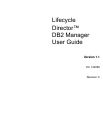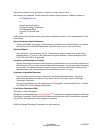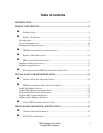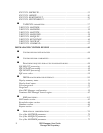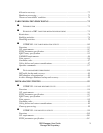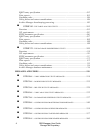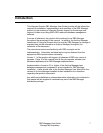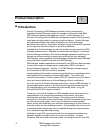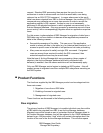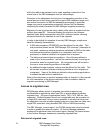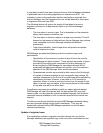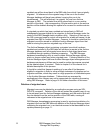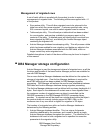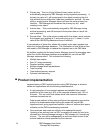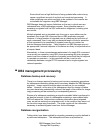
8 DB2 Manager User Guide
StorageTek Proprietary
Product Description
Introduction
Storage Technology's DB2 Manager software product is designed to
implement Archive Manager support for storage of table rows using IBM's
DB2 relational database management product. Archive Manager is a
Storage Technology archival database management product, which primarily
uses tape cartridge media for storage of archived objects. Archive Manager
also optionally enables disk copies of objects in an Archive Manager
database to be retained. The product supplies a range of facilities to optimize
the storage and retrieval of objects in an archive database.
Installation of Archive Manager on the host system is a pre-requisite for DB2
Manager implementation. Migrated rows are stored as objects in a standard
Archive Manager database, each Archive Manager database consisting of a
discrete set of tape cartridge volumes (plus optional disk copy datasets).
DB2 Manager uses a separate Archive Manager database for each DB2 table
which has been enabled for archival with DB2 Manager.
DB2 Manager enables applications developed to use DB2 as a data manager
to extend the range of storage options supported by DB2 to include an
Archive Manager database. Version 1.1 of DB2 Manager includes support
for all versions of DB2 from version 4 upwards.
Implementation of the product requires no modifications to applications which
use standard SQL processing to access DB2 tables. This means that
customer-developed or vendor-supplied DB2 SQL applications will be able to
store and retrieve table rows in Archive Manager without modification.
As is the case for all Archive Manager applications, usage of DB2 Manager to
access tape-resident objects in an online processing environment requires
the implementation of an automated tape processing facility, using the
StorageTek 4400 ACS range of products.
There are no functional limitations in DB2 Manager which would prevent its
implementation in a manual tape-processing environment, using free-
standing tape cartridge drives. However, the need for manual operator
intervention in this environment would mean that SQL commands issued from
an online processing system, which required access to a tape-resident
object, would wait indefinitely for a response (depending on the time taken to
manually satisfy the tape-handling request). A guaranteed level of service for
processing these requests can only be supplied through the implementation
of an automated tape handling strategy.
Note that a single SQL command issued from an application problem may
generate access to multiple rows from one or more tables. In these
instances, DB2 will create a temporary table containing the result of the SQL
1



